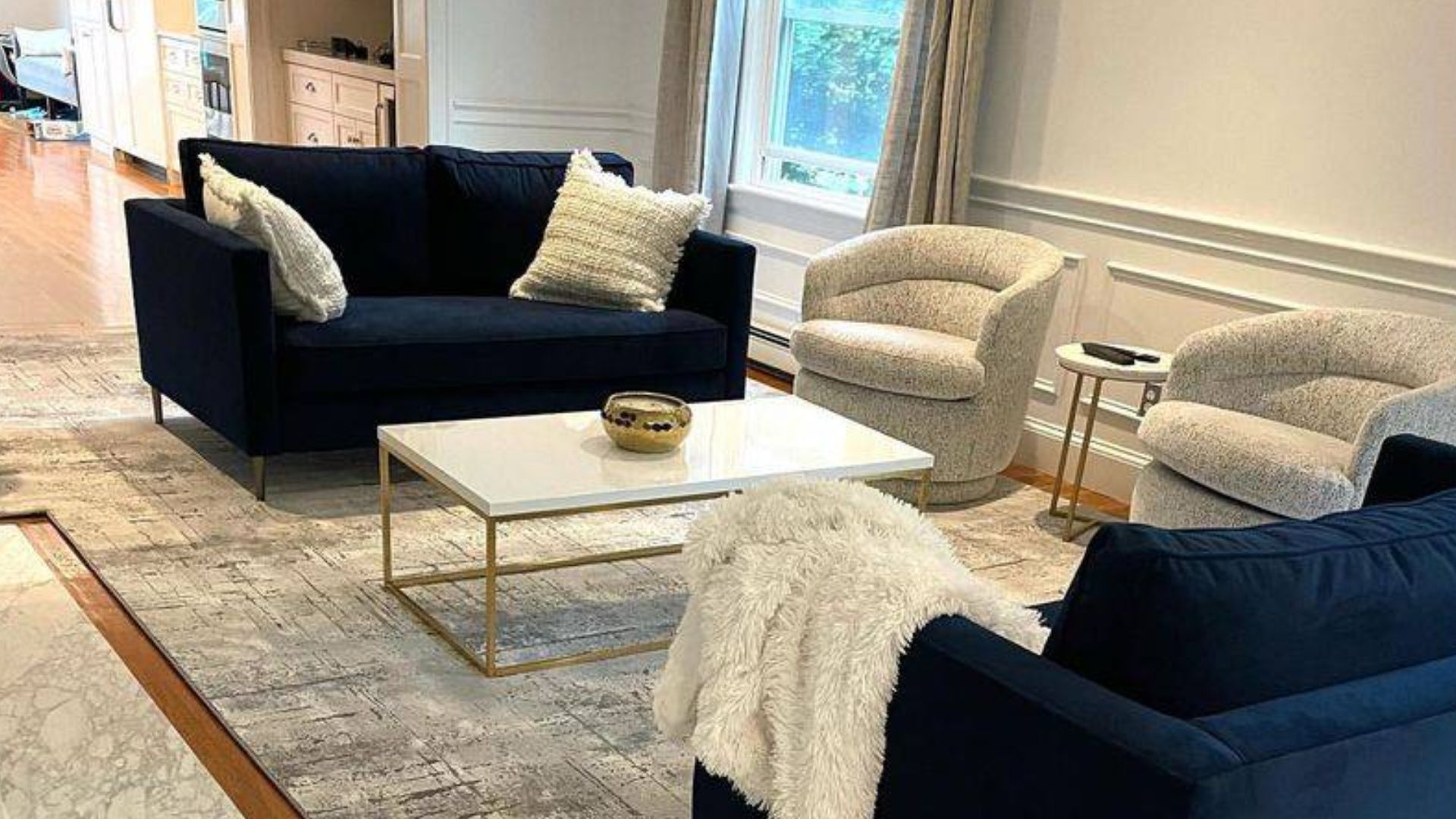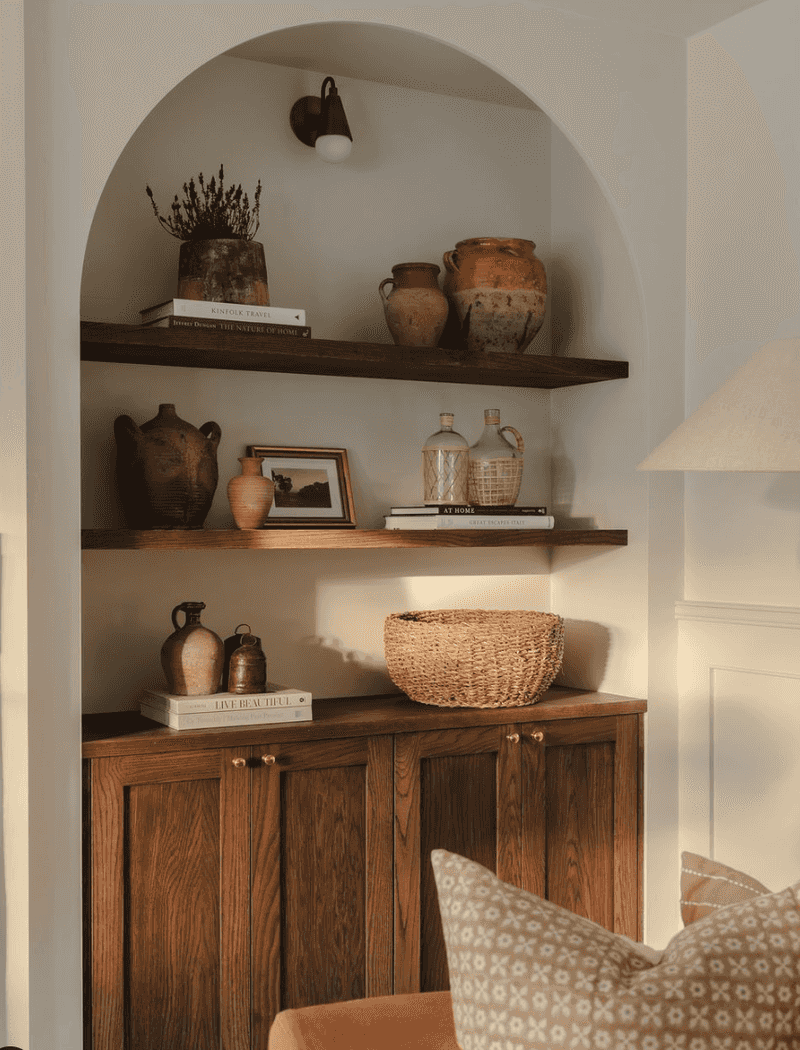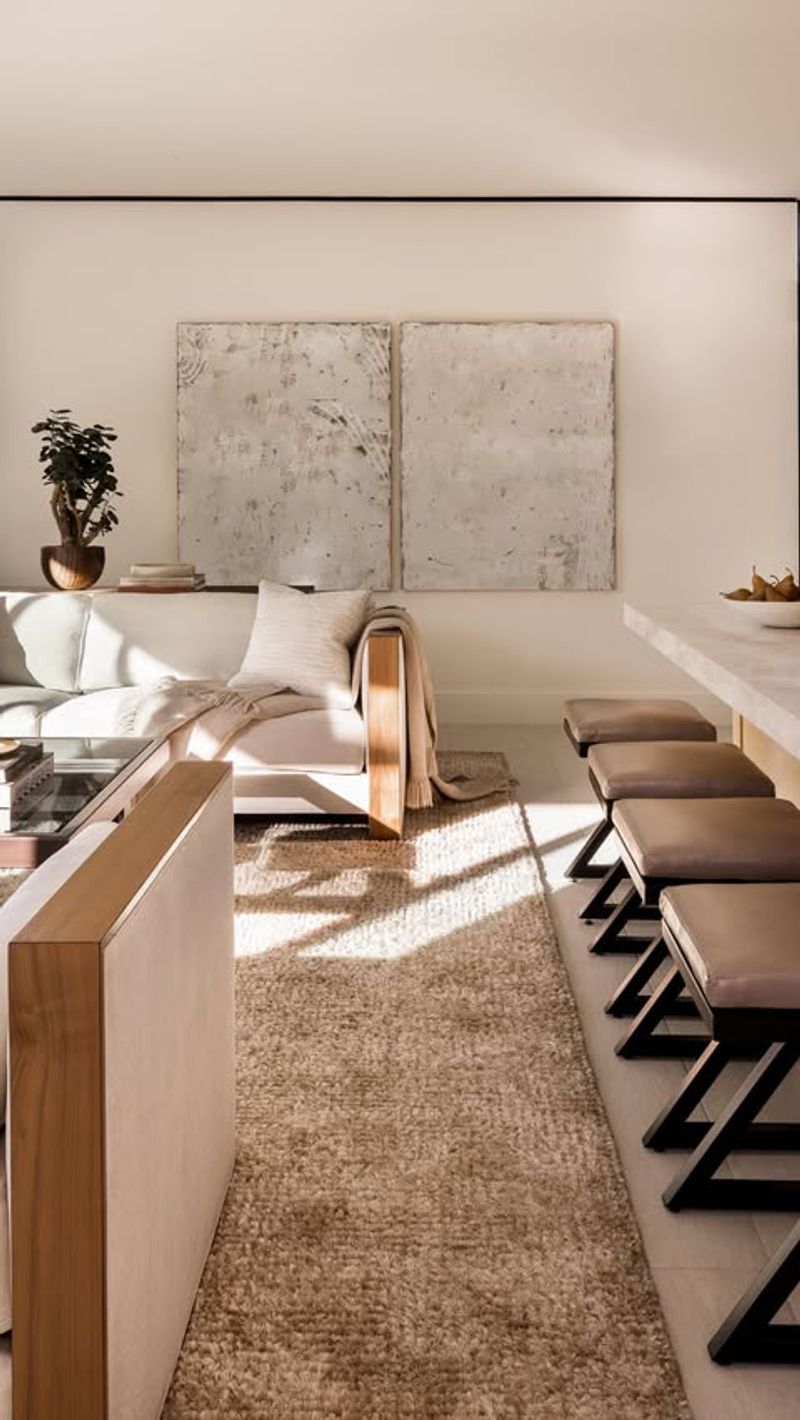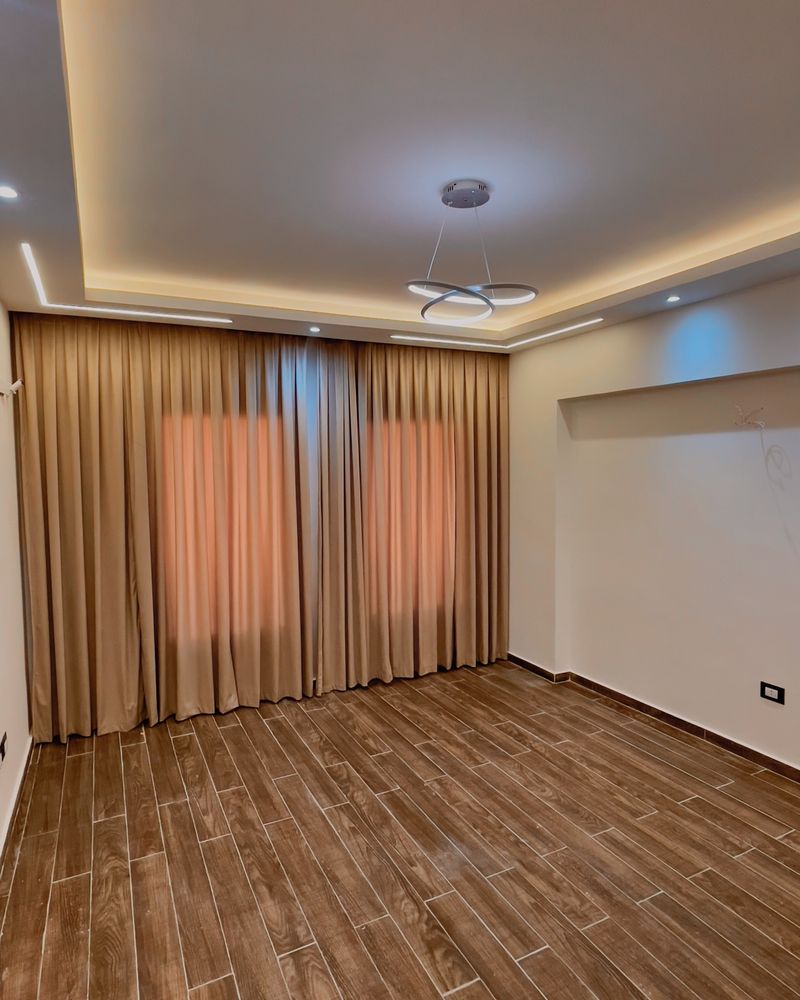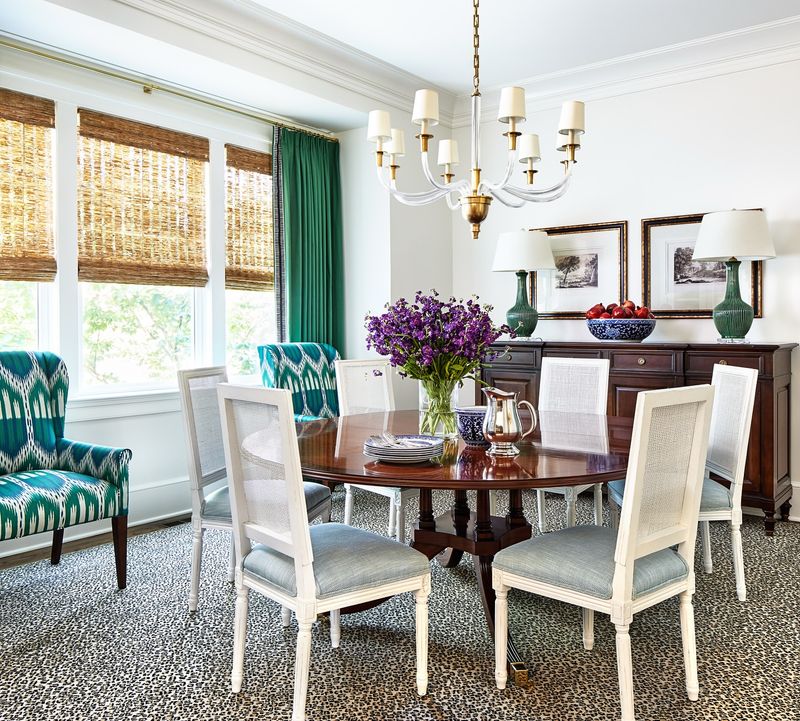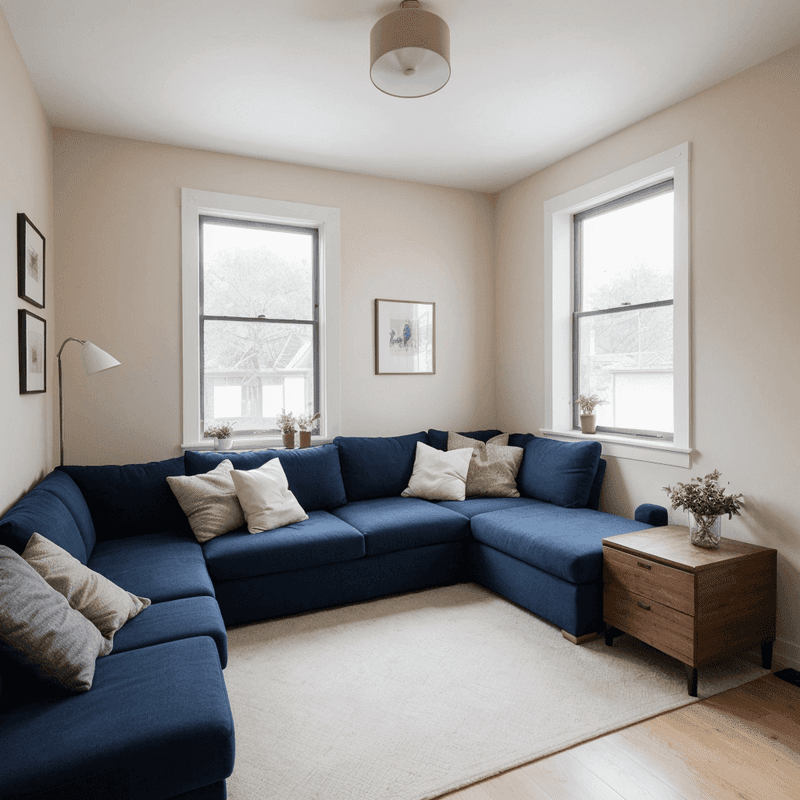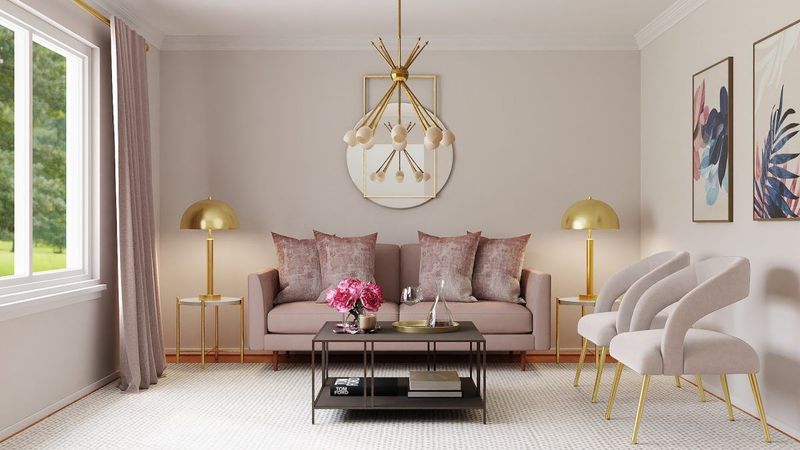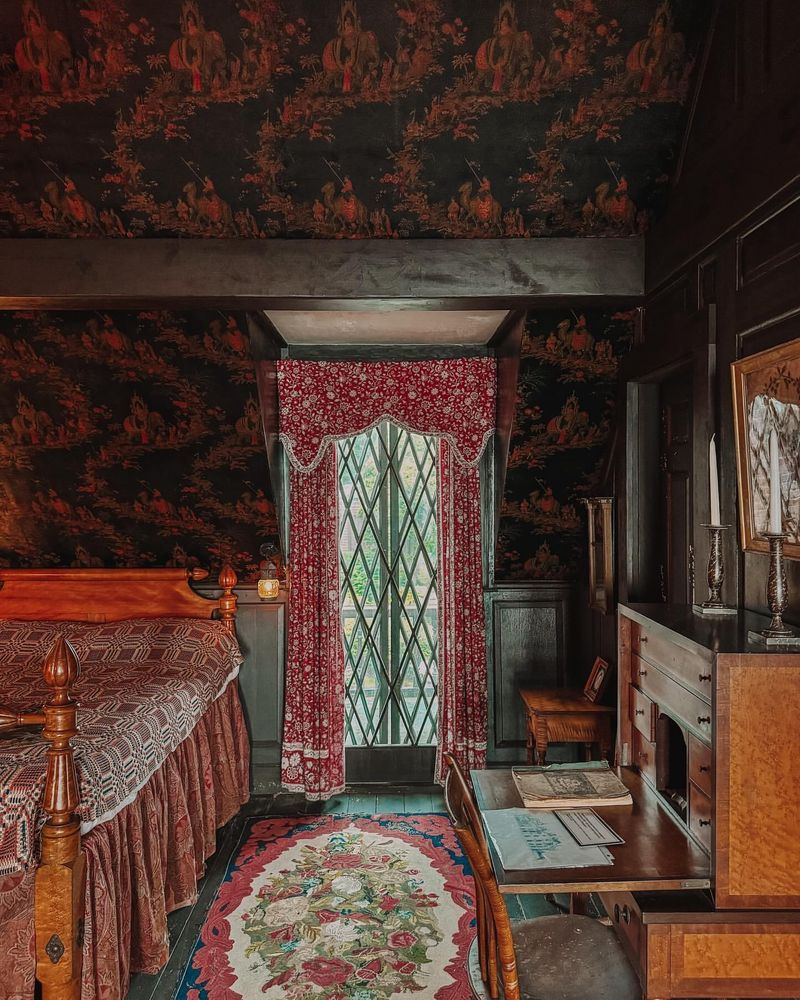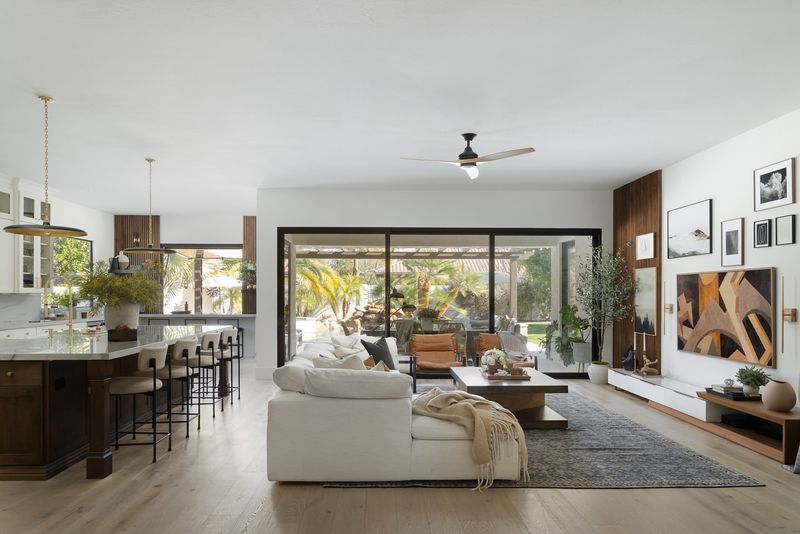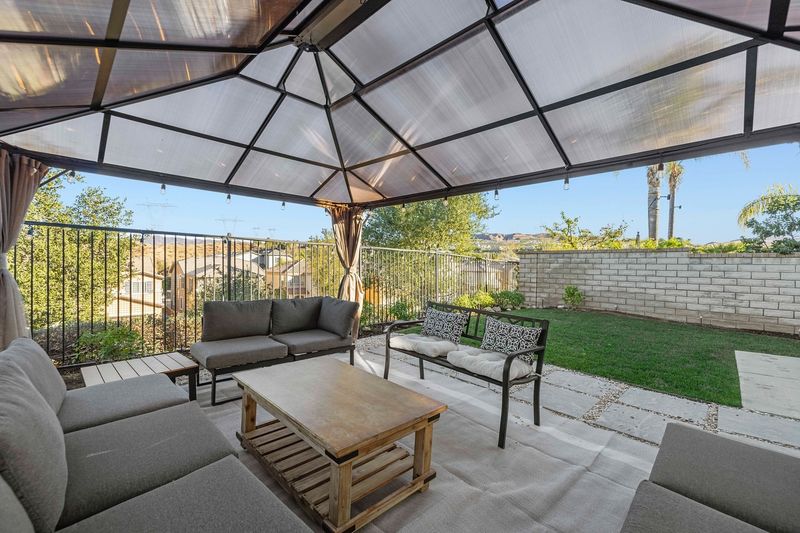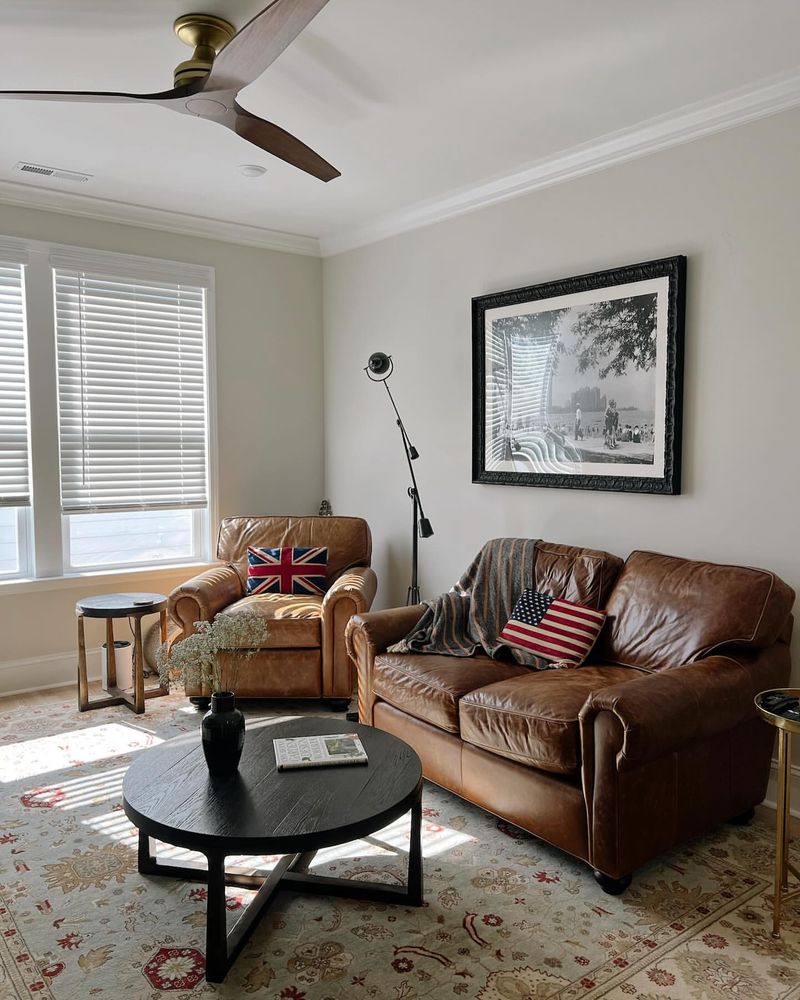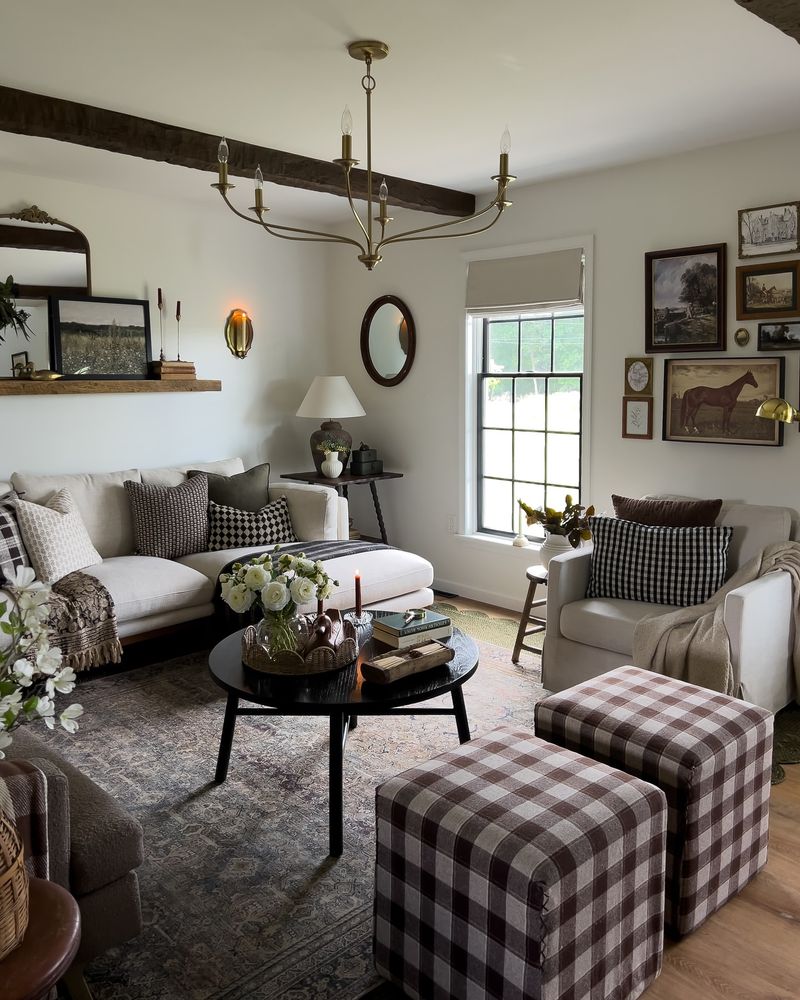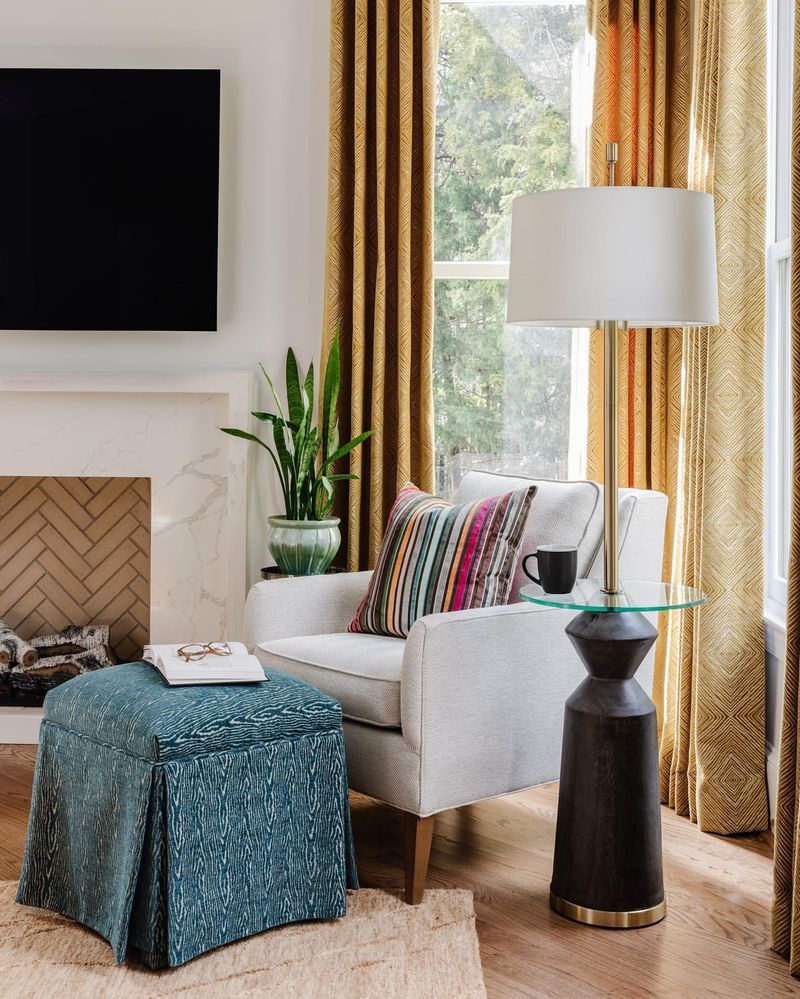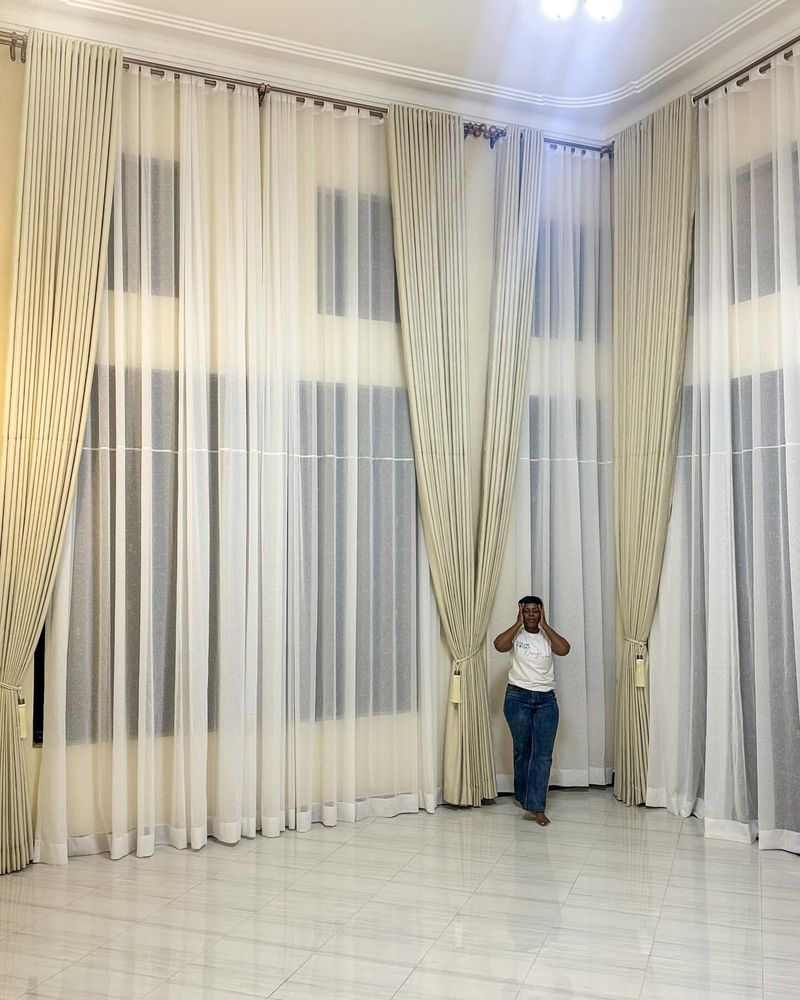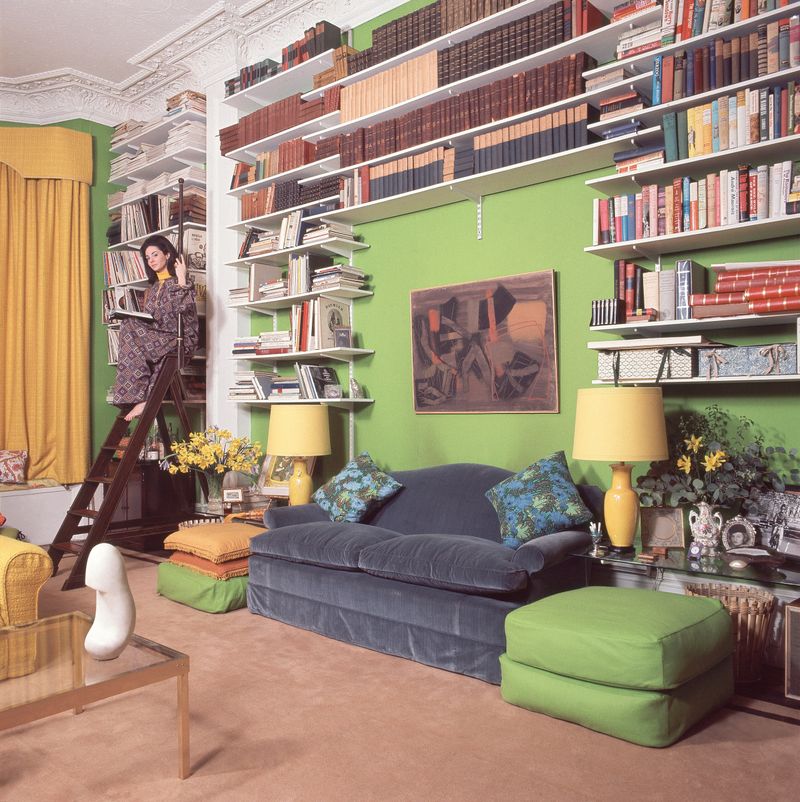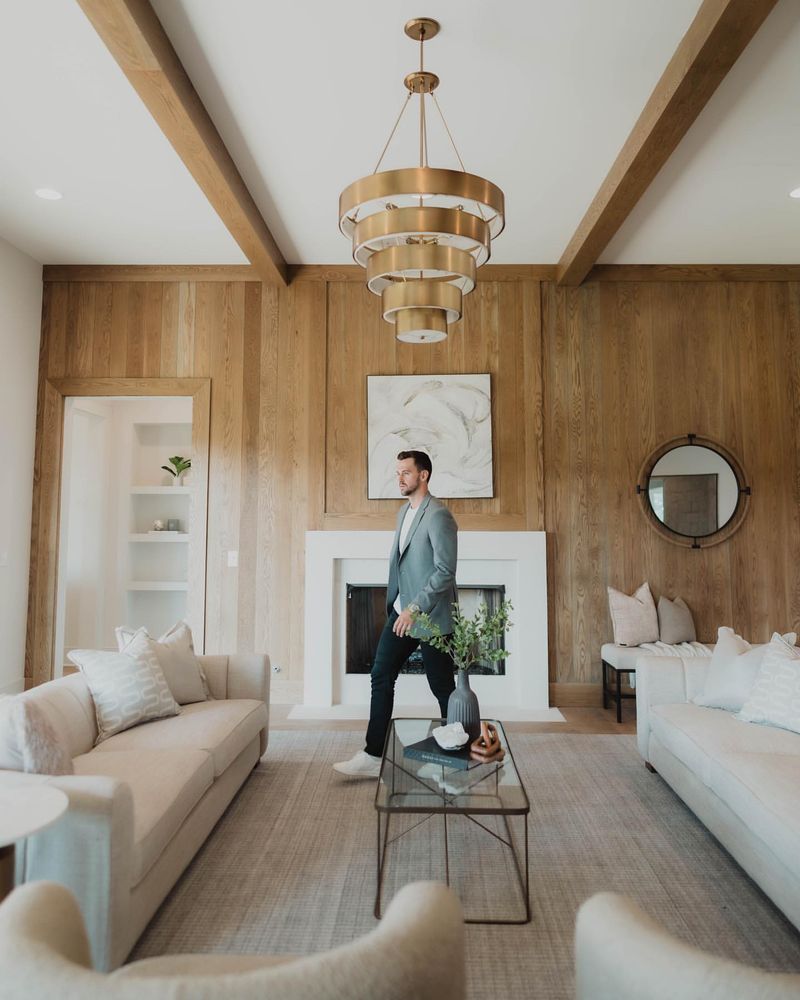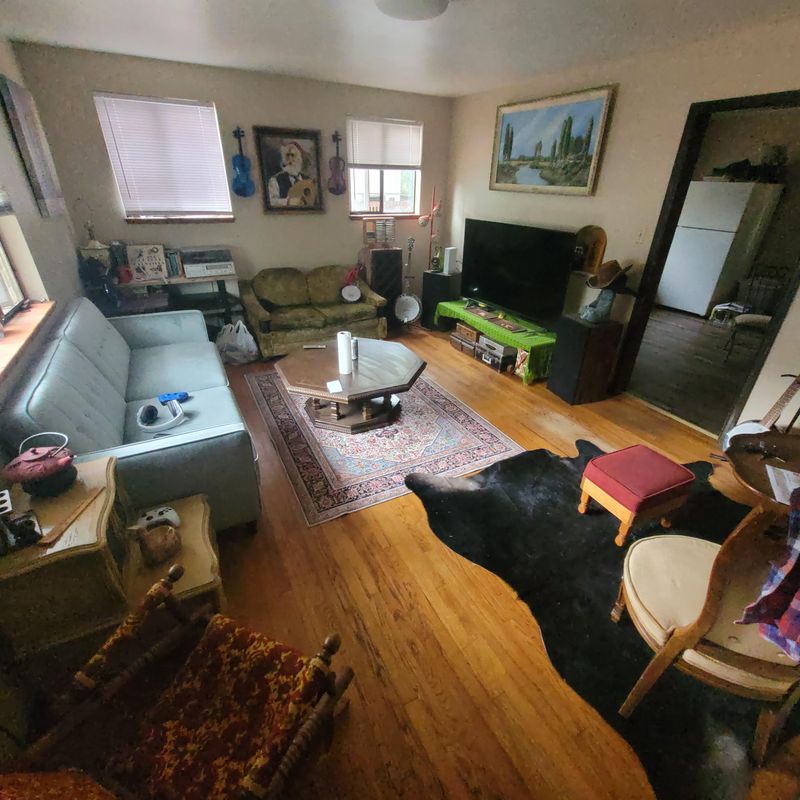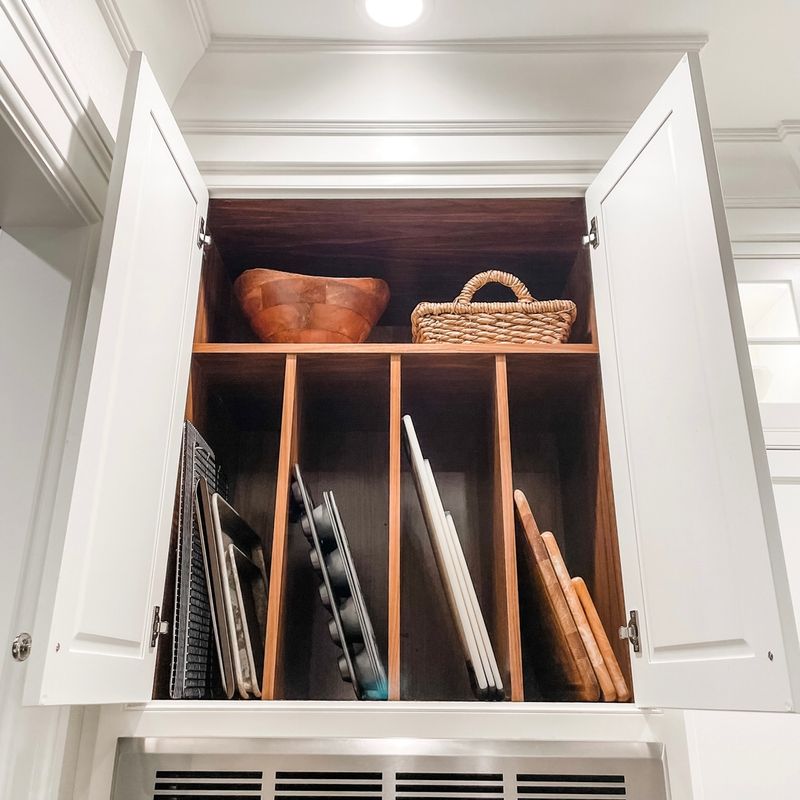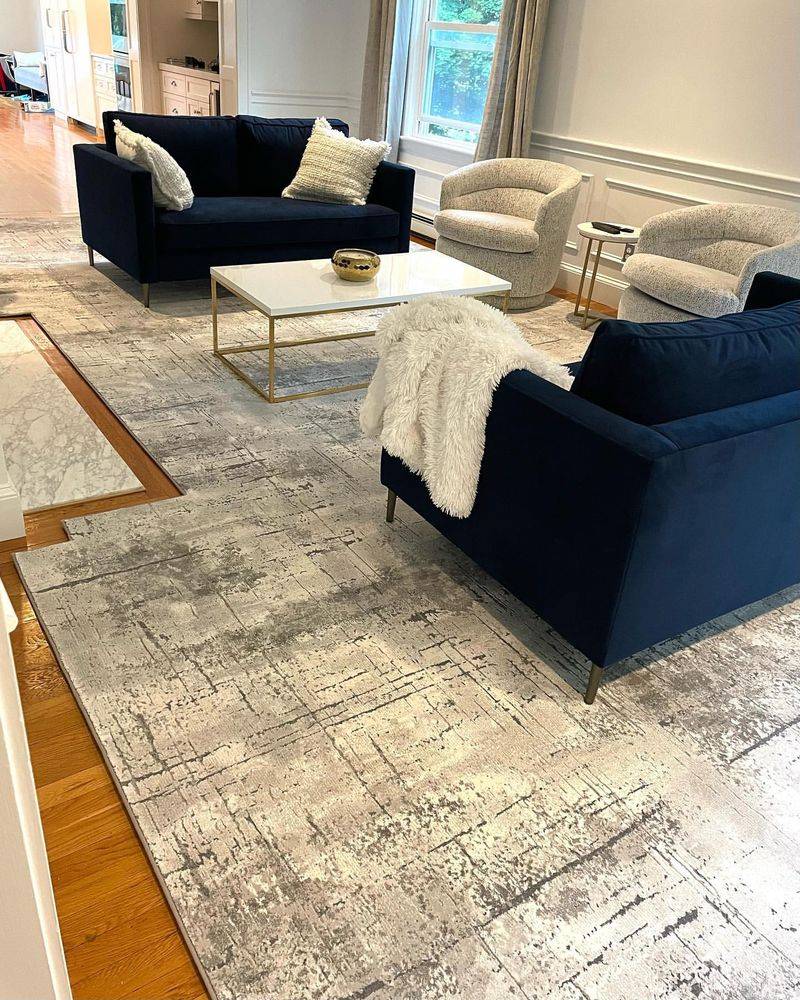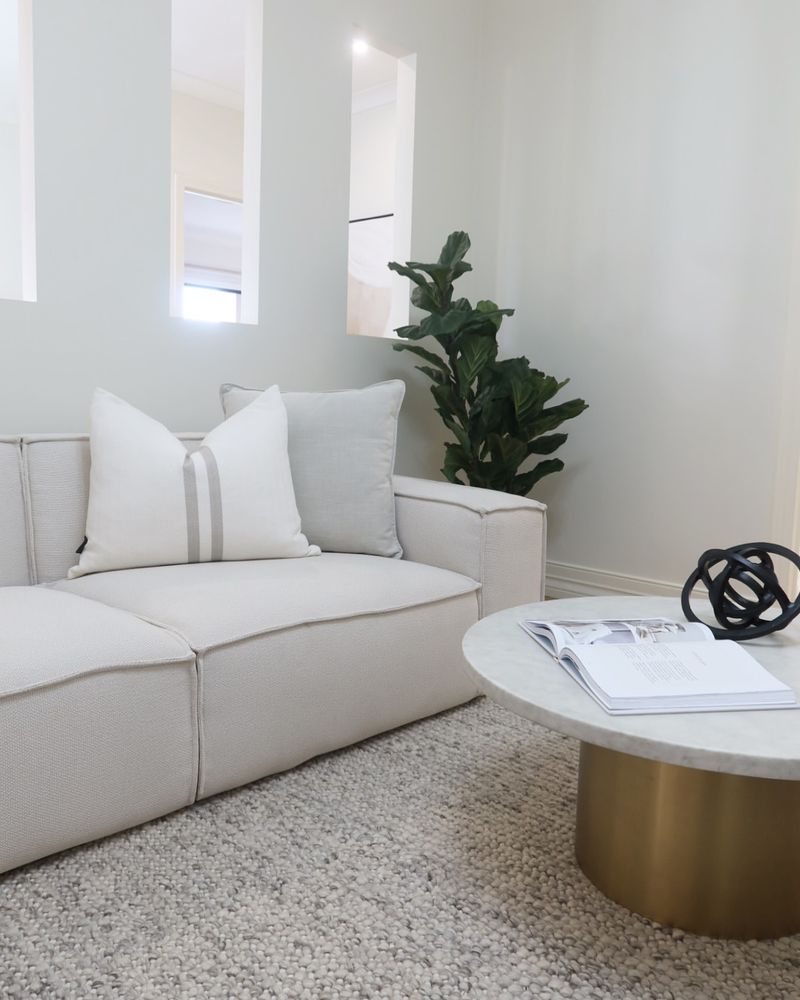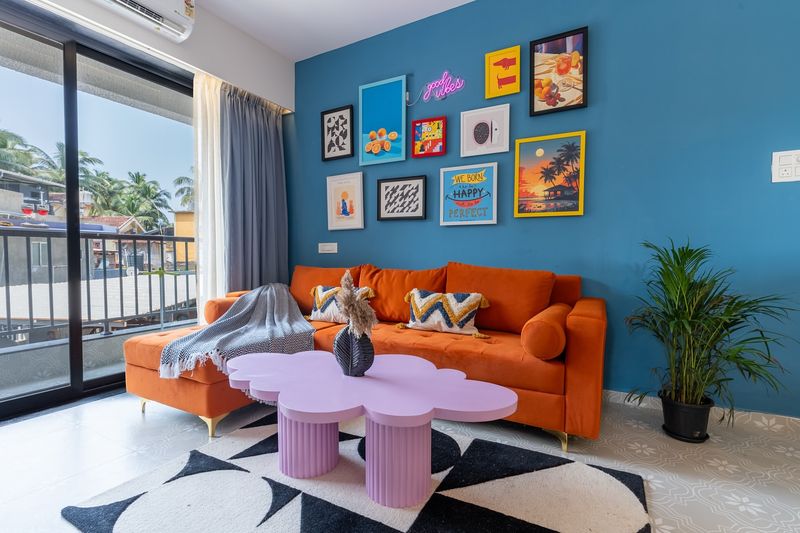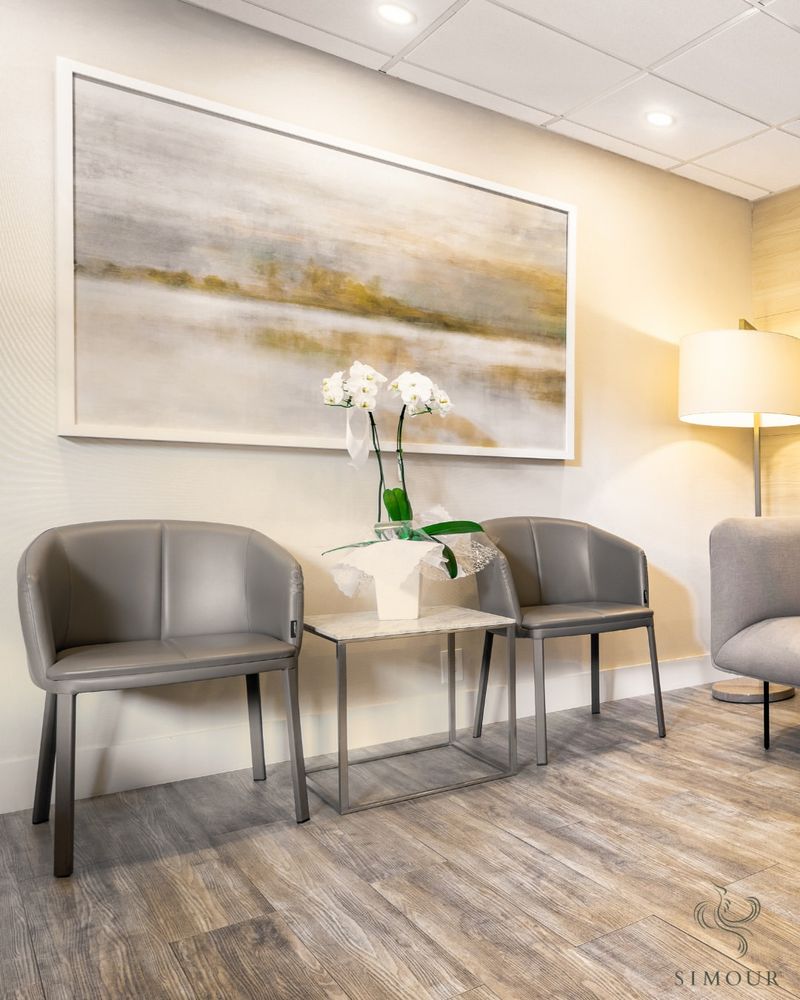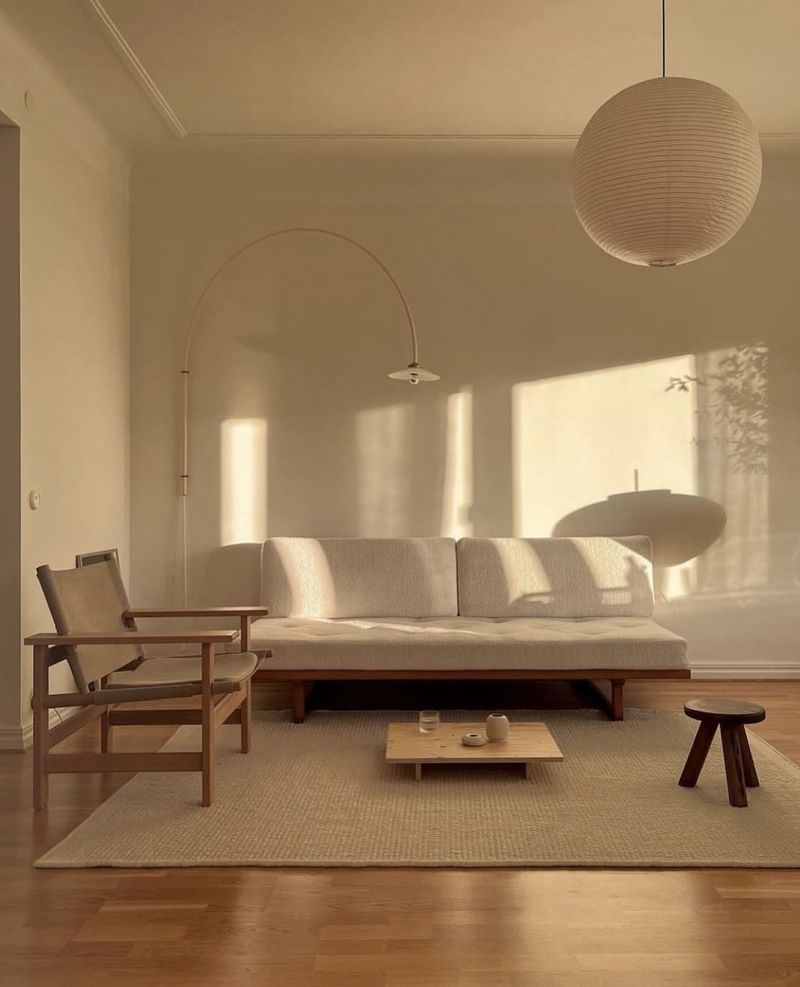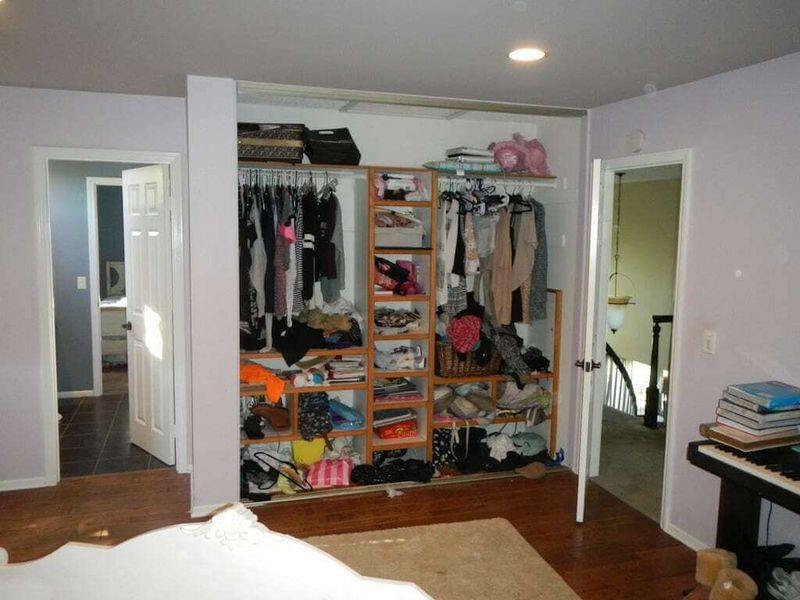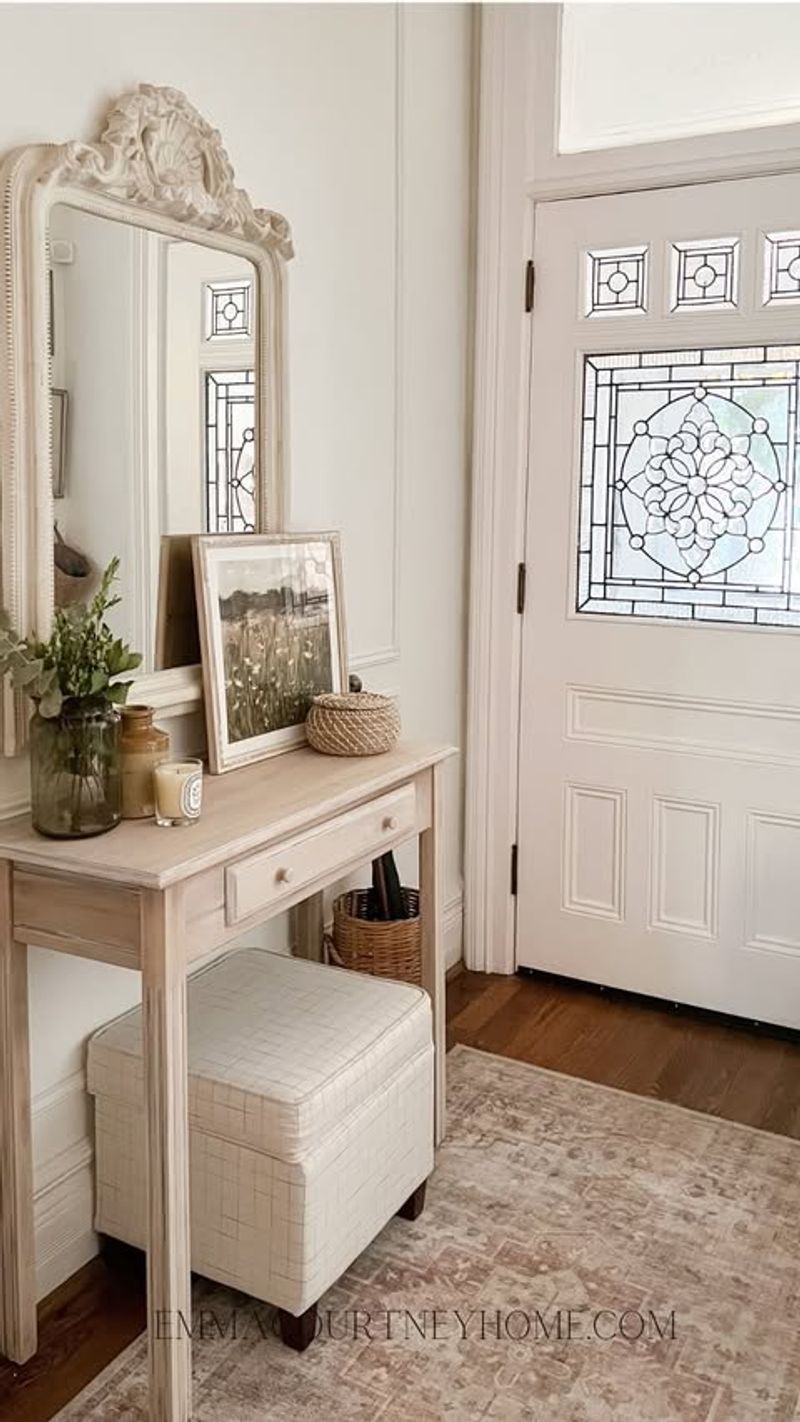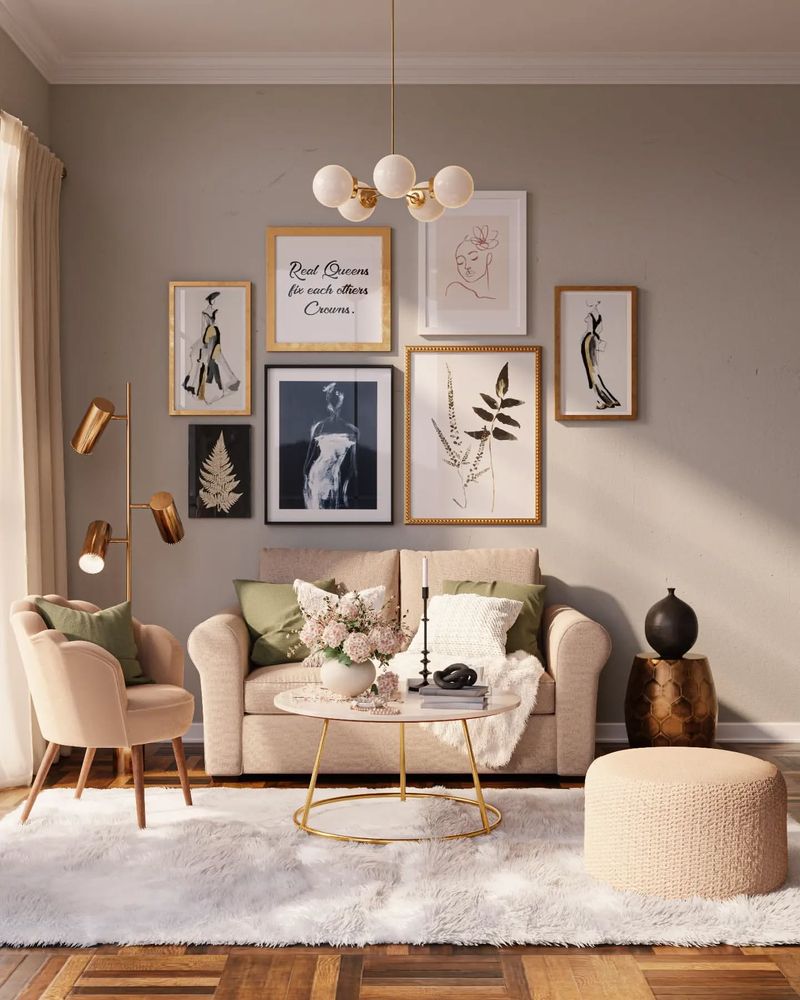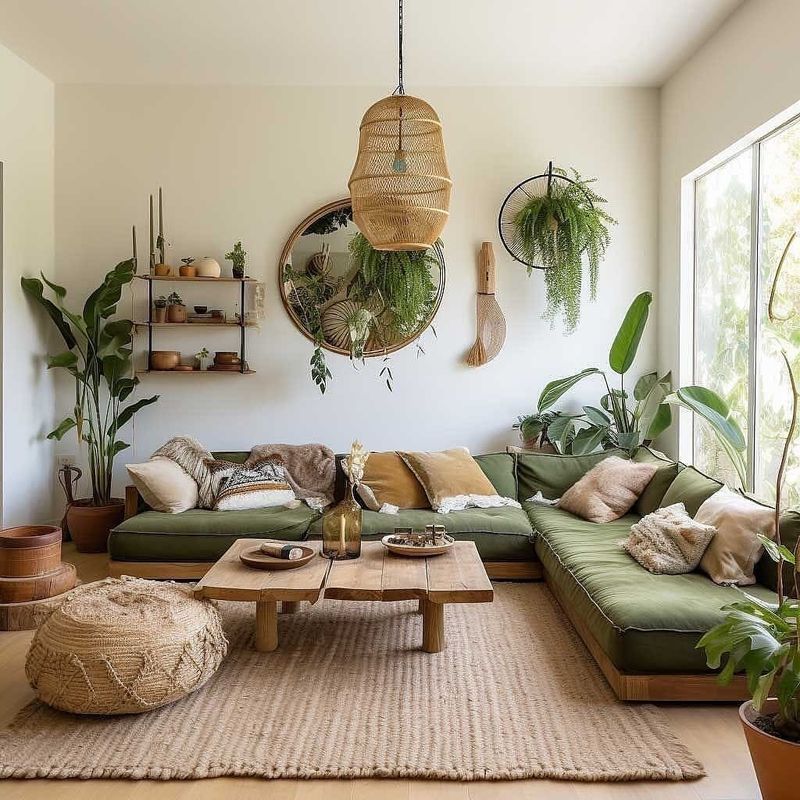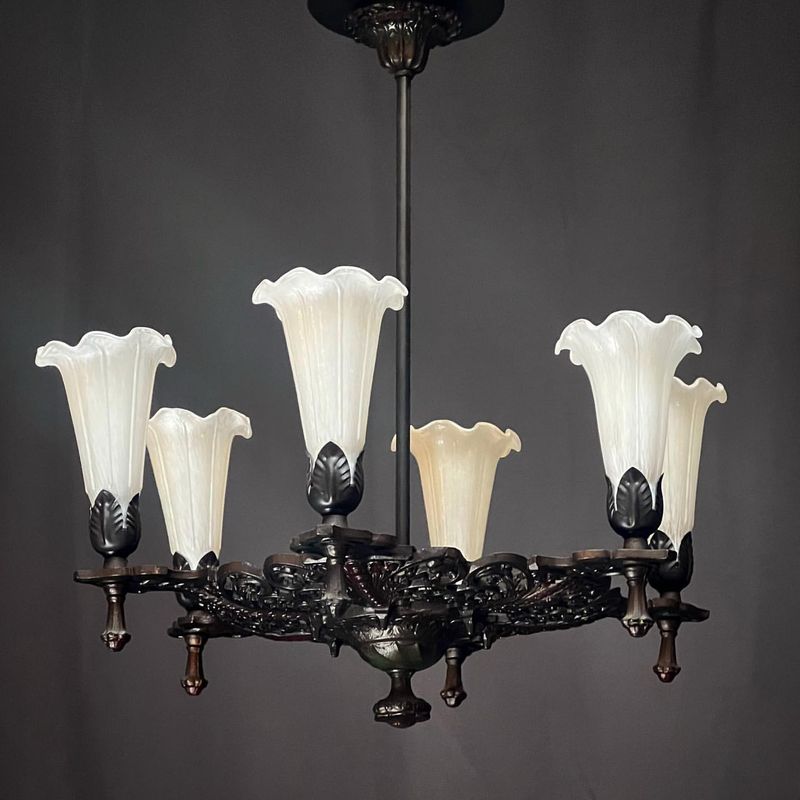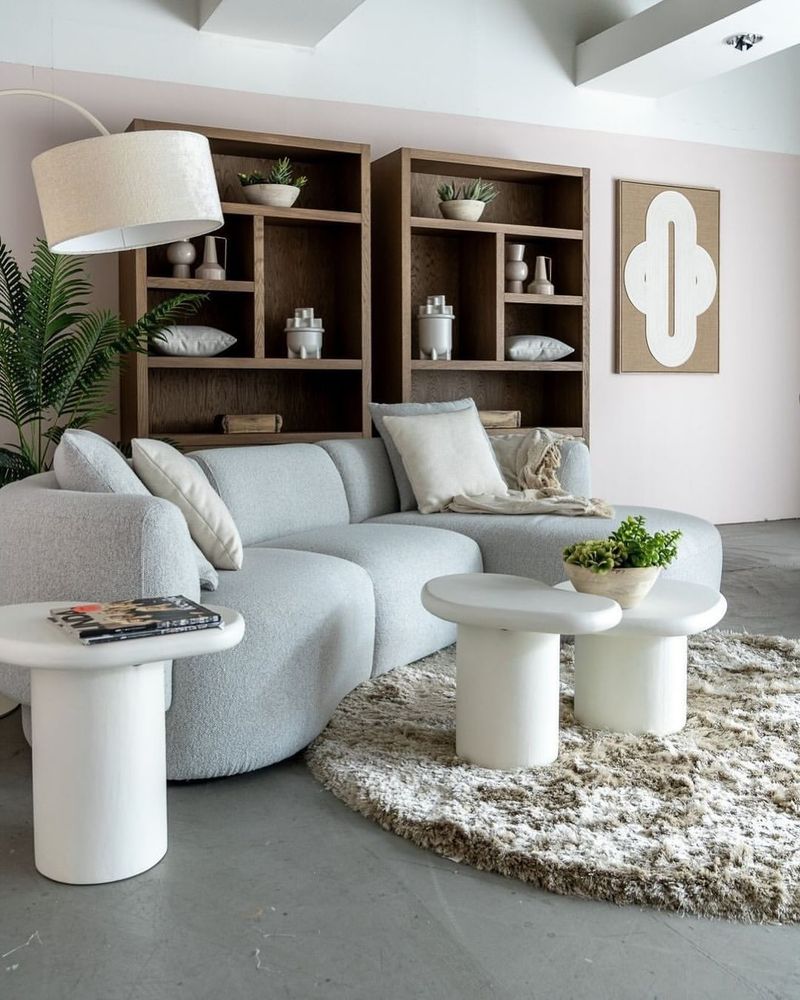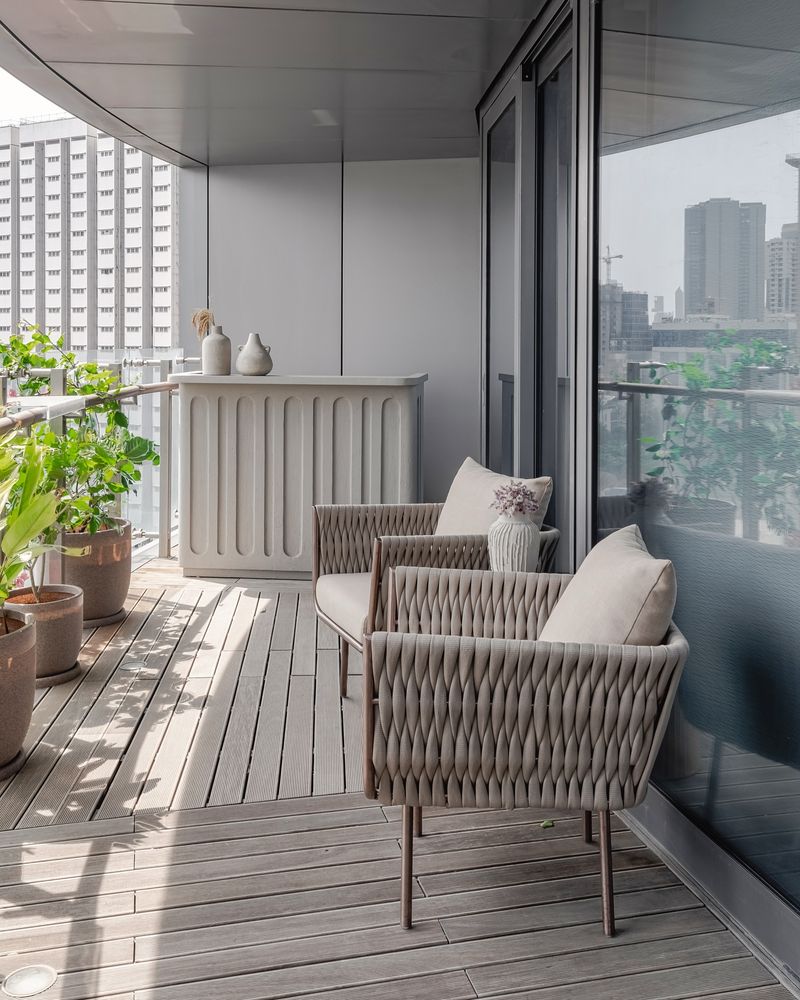Ever walked into a room and felt an inexplicable urge to rearrange everything? Well, you’re not alone. Sometimes, the tiniest design mistakes can transform a potentially dreamy home into a decor dud. But fear not! We’re here to rescue you from the perils of poor design choices.
With humor, creativity, and a sprinkle of sass, we’ll uncover the 29 design blunders you might be making at home. So buckle up, because you’re about to become a home design aficionado!
1. Clutter Overload
Let’s face it, clutter is a home’s worst enemy. Picture this: you walk into a room, and it’s as if every item you’ve ever owned decided to throw a party. It’s overwhelming, and not in a good way! The key to a dreamy home is simplicity and order. Start with decluttering, donate what you don’t need, and cherish the space you create. Your home will thank you, and trust me, your guests will too. A cleaner space is a happier place.
2. Wrong Paint Colors
Ah, the agony of a mismatched paint job! Imagine your walls laughing at your furniture because they can’t seem to get along. Choosing the wrong paint colors can wreak havoc on your home’s aesthetics. Opt for colors that harmonize with your furniture and decor. Swatch before you commit, and remember, sometimes less is more. The right paint can breathe life into any space, making it feel cohesive and welcoming. Your walls deserve to shine, not clash.
3. Improper Lighting
Lighting can make or break a room’s vibe. Picture a romantic dinner under fluorescents — not exactly dreamy, right? Proper lighting can transform your home into a cozy haven. Mix ambient, task, and accent lighting to create a balanced ambiance. Invest in dimmers for versatility, and let your lights set the mood. Don’t let poor lighting cast a shadow over your design dreams. Illuminate your space with style and purpose.
4. Misplaced Furniture
Ever walked into a room and felt like you were navigating a maze? Misplaced furniture can do that to a space. It’s essential to find the right balance and flow, allowing for easy movement. Arrange your furniture with purpose, ensuring each piece complements the other. Create focal points and allow breathing space between items. A well-arranged room invites relaxation and conversation, not confusion. It’s time to let your furniture dance in harmony.
5. Ignoring Scale and Proportion
Scale and proportion are like the Goldilocks of design — everything should be just right. Oversized furniture in a tiny room can feel like a bull in a china shop. Instead, choose pieces that complement the room’s dimensions. Embrace the art of balance by mixing large and small elements. This creates a dynamic yet cohesive look that feels inviting. Remember, your space should feel comfortable, not claustrophobic. Get your proportions right, and watch your home transform.
6. Neglecting Texture
Texture adds depth and interest to any space. Imagine a room filled with flat, monotone surfaces—it feels lifeless! Incorporate various textures like cozy throws, plush rugs, and rough-hewn woods to create visual intrigue. Mixing textures can make a room feel warm and inviting. Experiment with different materials and finishes to elevate your design game. Your home should tantalize the senses, so go ahead, play with texture, and watch it come alive!
7. Too Many Patterns
Patterns are fun until they become chaotic. Picture a room where stripes, florals, and polka dots are all fighting for attention. It’s dizzying! The secret to using patterns effectively is moderation. Select a few complementary patterns that enhance each other. Layer them thoughtfully to create depth and interest without overpowering the space. Let patterns be the accent, not the chaos. With the right balance, patterns can bring your home to life.
8. Lack of Focal Points
A room without a focal point is like a story without a plot. It leaves you wondering where to look. Establishing a focal point, like a striking piece of art or a beautiful fireplace, grounds the room. It gives purpose and direction to the design, drawing the eye and inviting admiration. Don’t let your space feel lost and adrift. Create captivating focal points that anchor your home’s design and keep it engaging.
9. Ignoring Outdoor Views
Nature can be your best accessory. Imagine covering up a stunning view with heavy drapes and blinds — it’s design sabotage! Embrace outdoor views by letting natural light pour in. Use sheer curtains or blinds that can easily be adjusted. The outside world can add beauty and serenity to your home. Don’t let your windows be a missed opportunity. Celebrate the view, and let it be a part of your design story.
10. Overlooking Personal Style
Your home should reflect who you are. Ignoring personal style can leave a space feeling impersonal and bland. Infuse your home with elements that resonate with you—whether it’s a quirky art piece or a vintage find. Personal touches make a house a home, telling your story and showcasing your passions. Dare to be different and let your personality shine through. Remember, it’s your space, so own it and love it.
11. Stuck in a Theme
Themes can guide design but becoming too attached can be a pitfall. Imagine a beach-themed room complete with sand-dunes wallpaper and seashells galore. It’s overkill! Instead, use themes as inspiration, not restrictions. Blend elements from different styles to keep it fresh and interesting. A touch of surprise can invigorate a space. Break free from the thematic chains and let your creativity roam free.
12. Forgotten Functionality
Design should always consider function. Have you ever sat in a stunningly designed chair only to realize it’s utterly uncomfortable? That’s a design fail. Ensure that your home not only looks good but also serves its purpose. Choose furnishings that are both stylish and functional. A beautiful space should be livable, catering to your daily needs without compromising on style. Function and form should dance together, creating a harmonious home.
13. Bad Curtain Choices
Curtains can be the jewelry of a room, yet so often they’re chosen last and haphazardly. Don’t let your windows wear mismatched accessories! Select curtains that harmonize with your room’s palette and style. They should frame your view, not obstruct it. The right curtains can add elegance and warmth, enhancing your home’s overall vibe. Treat them as an integral part of your design, not an afterthought.
14. Imbalanced Decor
Balance in decor is key. Picture a room where all the decorations are huddled in one corner—it’s unsettling! Aim for visual equilibrium by distributing decor evenly. Symmetry isn’t always necessary, but balance is essential. Mix tall and short pieces, and spread colors and textures throughout the space. A well-balanced room feels inviting and cohesive. Let your space sing in harmony, not discord.
15. Ignoring Ceiling Potential
Ceilings are often the forgotten canvas of a room. Imagine a ceiling that adds character instead of just existing overhead. Consider painting it a bold color or adding architectural details like beams or molding. A stunning ceiling can elevate a room, drawing the eye upward and adding an unexpected element of surprise. Don’t let your ceiling be an afterthought; let it be a masterpiece in its own right.
16. Mismatch in Styles
Mixing styles is an art that, when done right, sings with creativity. However, a haphazard clash of styles can feel disjointed. Picture a rustic farmhouse table sitting awkwardly next to a sleek, modern sofa. Instead, aim for a curated blend that speaks to your personal taste. Find common elements like color or texture to tie different styles together. When harmony exists within diversity, style becomes a statement.
17. Ignoring Vertical Space
Vertical space is a goldmine for design potential. Imagine a room with barren walls that yearn for personality. Utilize shelves, tall plants, or vertical art to draw the eye upward and maximize the room’s height. This creates a sense of openness and adds layers to your design. Don’t let your walls be wallflowers; let them contribute to your home’s story. Reach new heights with creative vertical solutions.
18. Poor Use of Rugs
Rugs can anchor a room, but a poorly chosen one can throw it off balance. Imagine a tiny rug floating in a sea of flooring — it’s awkward! Choose a rug that fits the space and complements your decor. It should be large enough to connect furniture pieces, creating a unified look. The right rug adds warmth and defines the space, making it feel complete. Don’t let your rug be an afterthought; let it be the foundation.
19. Overdone Minimalism
Minimalism is chic, but too much can feel sterile. Imagine a room so sparse it echoes! Strike a balance by adding warmth with textures, personal touches, and pops of color. Minimalism should invite tranquility, not emptiness. Choose quality over quantity and let each piece have a purpose. A well-curated space can feel both minimal and inviting. Embrace warmth within simplicity, and let your home radiate with understated elegance.
20. Art Display Dilemmas
Art should complement your space, not confuse it. Picture art pieces hung at awkward heights—it’s disorienting! The rule of thumb is to hang art at eye level, creating a natural flow. Group smaller pieces together for impact and ensure they’re proportionate to the wall size. Art is an expression of personality; let it elevate your room and invite admiration. Display it with intention, and let your walls become a gallery of your life’s story.
21. Overlooking Comfort
Style shouldn’t come at the cost of comfort. Imagine a beautifully designed sofa that’s a nightmare to sit on. A dreamy home welcomes you with open arms and cozy seating. Prioritize comfort by choosing furniture that supports relaxation. Test before you buy, and think about how you’ll use each piece in daily life. A stylish home that feels like a plush retreat is the ultimate design goal. Comfort is key to enjoying your sanctuary.
22. Ignoring Acoustics
Acoustics shape the soundscape of your home. Picture a room filled with echoes because of hard surfaces everywhere. Balance the acoustics by incorporating soft furnishings like curtains, cushions, and carpets. These elements absorb sound, creating a more pleasant auditory environment. A home that sounds as good as it looks offers a complete sensory experience. Let your design choices create harmony, not cacophony. Soundproof your sanctuary and savor the silence.
23. Unattractive Storage Solutions
Storage doesn’t have to be boring. Imagine freestanding plastic bins cluttering a chic living room — it’s a design crime! Choose stylish storage solutions that complement your decor. Incorporate beautiful baskets, built-in shelving, or chic cabinetry to keep clutter at bay. Smart storage enhances aesthetics while being functional. Let your storage reflect your home’s style and keep your space looking tidy and intentional. Embrace design-friendly organization.
24. Neglecting Entryway Design
The entryway is your home’s first impression. Imagine it as a blank canvas—uninspiring! Create a welcoming atmosphere with thoughtful design elements like a stylish console, inviting lighting, and personal touches. The entryway sets the tone for the rest of your home, so let it exude warmth and character. Let your creativity shine, and make the first step into your home a delightful one. A well-designed entryway beckons guests and homeowners alike.
25. Lack of Cohesion
Cohesion unites a home. Picture stepping from a bohemian living room into a minimalist kitchen — it’s jarring! Ensure each room speaks to the other through color, style, or theme. This creates a smooth transition and harmonious flow. It doesn’t mean every room needs to be identical, but they should feel connected. Cohesiveness brings a sense of unity, making your home a place of seamless beauty. Let your design speak in one voice.
26. Ignoring Natural Elements
Nature brings life to interiors. Imagine a room without a hint of greenery or natural texture — it feels barren! Incorporate plants, wooden accents, or stones to invite nature inside. These elements add warmth, texture, and a sense of tranquility. They remind us of the beauty outside our windows. Embrace the natural world within your design, and let it foster a connection between your home and the earth. Nature is the ultimate design ally.
27. Outdated Fixtures
Fixtures are the jewelry of a room. Imagine chic decor accompanied by outdated brass chandeliers — it’s an eyesore! Upgrade fixtures to reflect current trends and your personal style. Whether it’s sleek lighting, modern handles, or trendy faucets, small updates can make a big impact. Let your fixtures accentuate the beauty of your space, adding polish and flair. Up-to-date fixtures can revitalize a room, making it feel fresh and current.
28. Over-Reliance on Trends
Trends come and go. Imagine a room filled entirely with today’s hottest trends—what happens when they fade? Instead, use trends as accents while keeping the core design timeless. Invest in quality pieces with lasting appeal, and sprinkle in trends for a touch of freshness. This approach ensures your home remains stylish through the years. Let trends inspire, but not dictate your design. A timeless base with trendy touches creates enduring elegance.
29. Forgetting Balcony and Terrace Potential
Outdoor spaces like balconies and terraces often go underutilized, yet they hold immense potential for relaxation and entertainment. Ignoring these areas can mean missing out on a fabulous extension of your living space.
Transform your balcony with comfortable seating, potted plants, and ambient lighting. These elements can turn an overlooked area into a delightful retreat for unwinding.
Consider the layout and purpose of your outdoor space to maximize its usage. Embracing this extension of your home can enhance your overall living experience, adding value and enjoyment.

